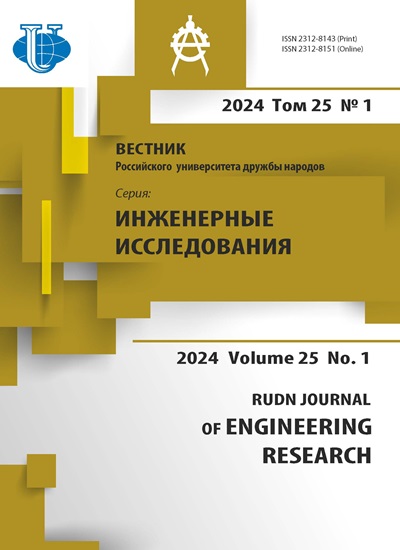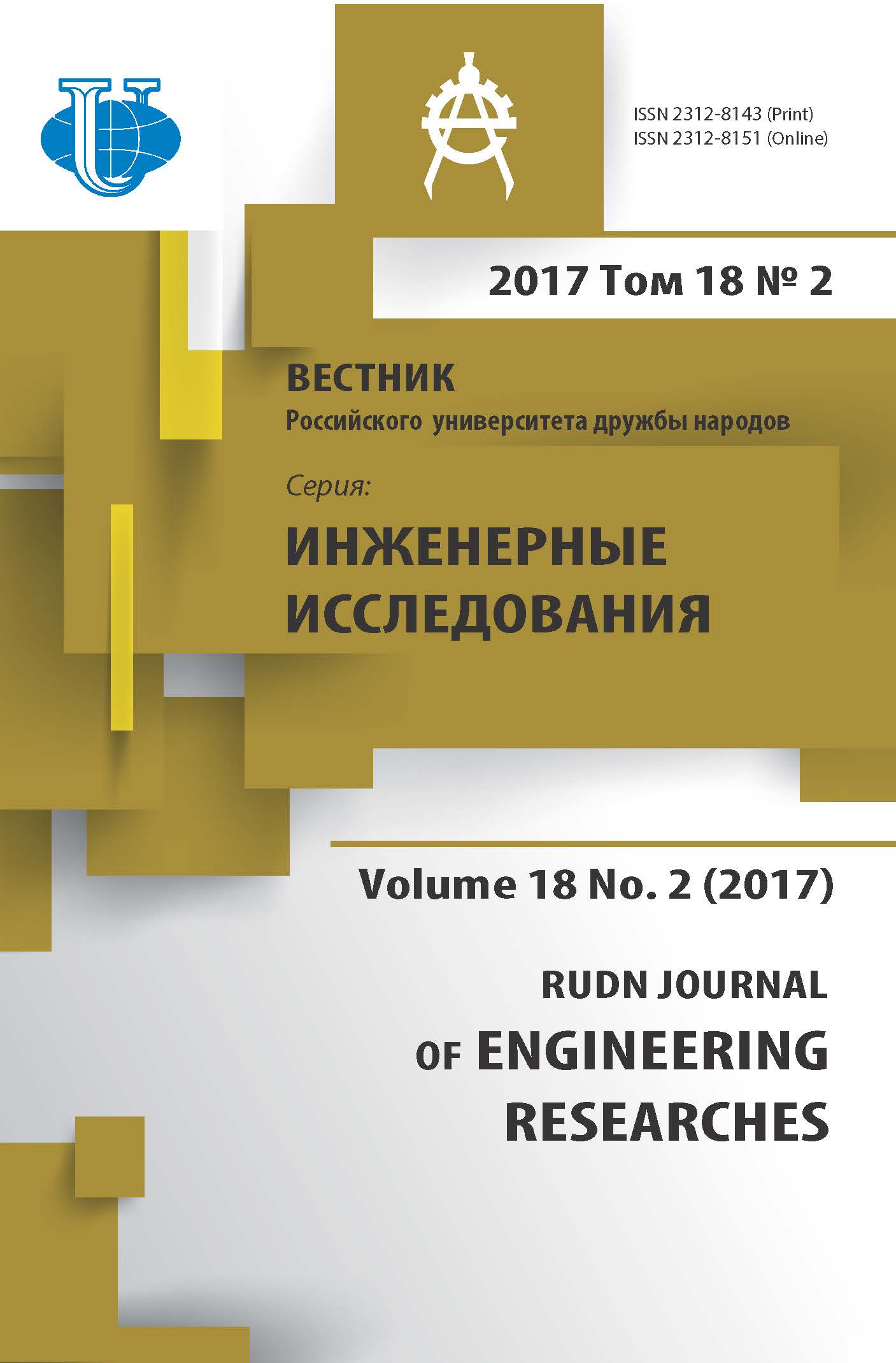EVALUATION OF POTENTIAL WATER EROSION OF HYDROGRAPHIC DEMARCATION OF MANABI, ECUADOR
- Authors: Fermin C.A.1, Sinichenko EK1, Gritsuk II1,2
-
Affiliations:
- Peoples’ Friendship University of Russia (RUDN University)
- Water Problems Institute Russian Academy of Science
- Issue: Vol 18, No 2 (2017)
- Pages: 192-203
- Section: Architecture and civil engineering
- URL: https://journals.rudn.ru/engineering-researches/article/view/16693
- DOI: https://doi.org/10.22363/2312-8143-2017-18-2-192-203
Cite item
Full Text
Abstract
Water erosion is the most essential reason of destruction of soils in the whole world. So, in Asia, from the 747 million hectares of earth suffering from erosion, 60% correspond to water erosion; in Africa from 497 million, 46%; in South America, from 243 millions, 51%; in Europe, from 219 million, 53%; 106 millions in a North and Central America, Bifani (1984). The same author specifies that, the phenomenon of erosion is closely related to the phenomenon of settling. The process of water erosion is usually measured on volume alluviums. The Rivers Ganges, Brahmaputra and Huang He, transport 1451, 726 and 1887 million tons annually, respectively, as compared to the rivers Mississippi, Amazon and Nile, that carry only 97, 63 and 31 tons on the square kilometer of basin (Holeman, 1968) [9].Erosion of soil in Ecuador is a serious ecological problem that affects greater part of country in one or another degree. The use of methods of prognostication of washing off of superficial fertile layer of soils from fallouts did not get wide use, as numerous researches were directed to on a quantitative estimation speed of erosion for the different types of land-tenure in the off-shore zones of river basins, and only not many were concentrated on prognostication of erosive processes on all territory. In 1986 the Ecuadorian Center of Geographical Researches (CEDIG), for the first time conducted the row of the researches related to the capture of common data about the problems of erosion in a country [4].In this paper, based on actual data on rainfall in 51 years and the composition of the soils, was carry out the estimation of potential water erosion for Hydrographic Demarcation of Manabi (Ecuador).
Keywords
About the authors
Campos Antonio Fermin
Peoples’ Friendship University of Russia (RUDN University)
Author for correspondence.
Email: arcangelitok@yahoo.com
Graduate student of the Department “Architecture and Construction”, Engineering Academy, Peoples’ Friendship University of Russia (RUDN University). Research interests: hydraulics and engineering hydrology
Miklukho-Maklaya str., 6, Moscow, Russia, 117198E K Sinichenko
Peoples’ Friendship University of Russia (RUDN University)
Email: sinichenko_ek@pfur.ru
Ph.D., Associate Professor of the Department “Architecture and Construction”, Engineering Academy, Peoples’ Friendship University of Russia (RUDN University). Research interests: hydraulics and engineering hydrology
Miklukho-Maklaya str., 6, Moscow, Russia, 117198I I Gritsuk
Peoples’ Friendship University of Russia (RUDN University); Water Problems Institute Russian Academy of Science
Email: gritsuk_ii@pfur.ru
Ph.D., Associate Professor of the Department “Architecture and Construction”, Engineering Academy, Peoples’ Friendship University of Russia (RUDN University). Senior researcher laboratory of “Channel flow dynamics and ice thermal conditions”, Russian academy of sciences Water problems institute. Research interests: hydraulics, engineering hydrology, ice thermal conditions
Miklukho-Maklaya str., 6, Moscow, Russia, 117198; Gubkina str., 3, Moscow, Russia, 119333References
- Kampos Sedeno A.F., Sinichenko Ye.K., Gritsuk I.I. Strukturnyy podkhod k otsenke morfometricheskikh kharakteristik basseynov rek provintsii Manabi (Ekvador) [A structured approach to the evaluation of the morphometric characteristics of the river basin demarcation of Manabi (Ecuador)]. Vestnik RUDN. Seriya «Inzhenernye issledovaniya». 2015. № 1. Pp. 52—61.
- Kampos Sedeno A.F. Gidrologicheskoe obosnovanie kontrolya i optimizatsii ispolzovaniya vodnykh resursov Gidrograficheskoy demarkatsii Manabi (Ekvador) [Hydrological study control and optimize the use of water resources of the hydrographic demarcation Manabi (Ecuador)]. M.: RUDN, 2016. Pp. 79—86.
- Anache J., Bacchi C., Panachuki E., Alve Sobrinho T. Assessment of methods for predicting soil erodibility in soil loss modeling // Geociências. 2015. T. 34. № 1. Pp. 32—40.
- Centro Ecuatoriano de Investigación Geográfica. La erosión en el Ecuador // Documentos de investigación. 1986. № 6. 96 p.
- Correa Calle O. Modelo dinámico para calificación de la amenaza pluvial y evaluación de la posibilidad de erosión en la sectorización geotécnica de oleoductos y su aplicación en la planeación y toma de dicisiones. Bogotá: Universidad Nacional de Colombia — Facultad de Ingeniería, 2003. 87 p.
- Díaz J. Análisis de Erosión de suelo. Canada: Services in Geographic Information Systems (GIS), 2014. P. 6—7.
- Food and Agriculture Organization of the United Nations — FAO. Digital Soil Map of the World — ESRI shapefile format [Электронный ресурс] / Food and Agriculture Organization of the United Nations — FAO. 2017. Access mode: http://www.fao.org/geonetwork/srv/en/metadata.show?id=14116
- Instituto Geografico Militar del Ecuador. Geodescargas: Cartografía, Software, Manuales, Enlaces [Электронный ресурс] / Instituto Geografico Militar del Ecuador. 2017. Access mode: http://www.geoportaligm.gob.ec/portal/index.php/cartografia-de-libre-acceso-escala-50k/
- Santacruz de León G. Estimación de la erosión hídrica y su relación con el uso del suelo en la cuenca del río Cahoacán, Chiapas, México/ German Santacruz de León // Aqua-LAC. 2011. T. 3. № 1. P. 45—54.
- Wawer R., Nowocieñ E., Podolski B. Real and Calculated K USLE Erodibility Factor for Selected Polish Soils / R. Wawer and etc. // Polish Journal of Environmental Studies. 2005. T. 14. № 5. P. 655—658.
















